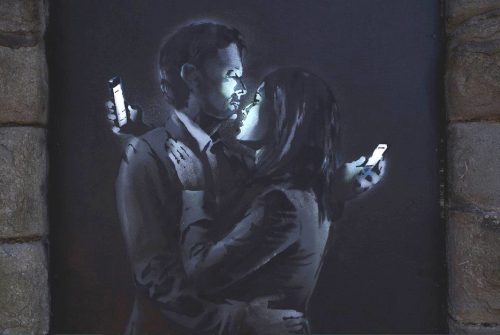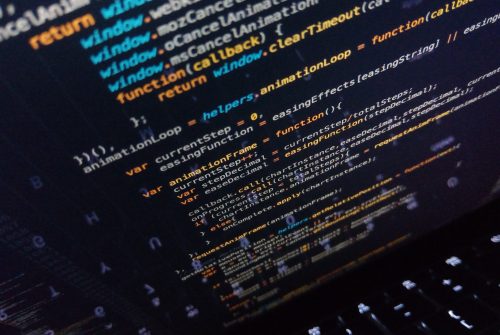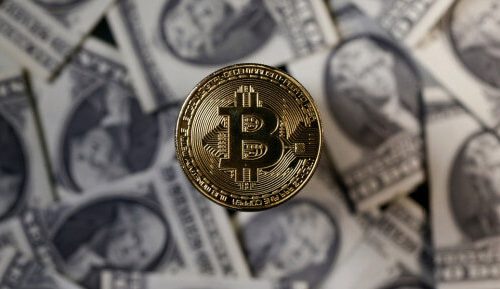It’s the golden age of hyper-technological street art
10 January 2019 | Written by Guido Casavecchia
Technological innovation is revolutionizing the world of street art, which in recent years has increasingly become an urban design tool.

The 2018 edition of Memorie Urbane, the street art festival that since 2011 transforms the most neglected areas of the cities into an open-air museum, accessible to everyone, has closed on December 4th, 2018. Numerous international artists have realized in 9 Italian cities works on walls, accessible to viewers through the Urbacolors app (to geolocalize them) and KoinArt (a microchip installed behind the work tag and which sends radio frequencies to the smartphone, transmitting all useful information for the public).
But street artists were also protagonists of the 2018 edition of Modena Smart Life. Companies, local authorities, associations, schools and universities have discussed the social, economic and strategic value of digital data using street art, demonstrating how to combine it with technology.
In museums, technological innovation allows for some time to live experiences of immersive storytelling, to catalog the works through color recognition, artificial intelligence, machine learning, and to obtain information on the works through instant messaging (with chatbot).
But it’s the business sector of the street art the one that is getting more advanced. Innovative forms of marketing are being created that intercept the new tastes of the public. There is increasingly moving towards the model of the open-air museum, cheaper for the absence of the ticket and more fascinating because traveling and varied, allowing you to experience more.
Google in 2017 has commissioned the Mural Project Data Center to various street artists. The goal is to make the work environment pleasant for their employees in the datacenters and to promote the Google Street Art Project, an app to map and tag urban works of art. The Mountain View company aims to bring the best possible experiences to the consumer by offering a product that will lead them to discover urban art.
MAUA, however, born from the start up BEPART, is a clear example of the downsizing of Italian cities. With AR and VR, design, video, sounds and words, it allows you to install content or enjoy urban spaces through your smart device and special viewers.
The street artist Luis Valley installs plaques on his works that, once framed with your smartphone camera, allow you to see the painting move, overlay objects or animals in motion and see the colors changed.
At Eindhoven’s urban culture festival Emoves 2018, AUJIK presented 4D Graffiti Invasions. Their artistic research combines robotics, artificial intelligence, architecture and neuroscience, allowing the viewer to take with the smartphone graffiti and street art interventions that appear and disappear virtually from every glimpse of the real surrounding landscape.
The dimensions of the space and the works become even more fluid thanks to MoMAR, app that uses AR to remix collections of the MoMa of New York and transform them, handle them, using digital and desecrate them (like the avant-garde currents) virtually.
The supports, the forms used by street artists are increasingly innovative. For example, Salvo Ligama to paint his pieces and choose colors, uses an algorithm, which translates human sounds and voices into shades of color.
Even more, the artist INSA has created moving graffiti. The works are reproduced 4 times on the same support, then copied and pasted, creating the same effect of the GIFs but immersed in street art and even visible from satellites in space.
A group of visual artists and producers of electronic music has created Suburban Signals, a documentary to give new light to railway yards and industrial sites in Russia.
The film follows the interventions of some artists who explore the urban environment through the combination of street art and digital technology, light installations and projections using sprays, LED strips, and MIDI controllers.
The Deus Ex Fabrica project, born in Schio (VI) uses AI and IOT to revive the memory of abandoned places (suburbs or factories) and transmit its history, making it clear how citizens can participate in urban style design.
Even Mosaico Digitale, with the Graffiti 4 smart city project, transforms the suburbs into places of aggregation. With the digital street art apply tiles on smartwall that allow you to connect to the walls, using the 5G technology, and access a range of services (discover points of interest, receive information, use digital proximity services, manage the stop of your car, confer the waste by differentiating it).
Unfortunately, the legislation and the jurisprudence of many jurisdictions do not always agree that street art is an artistic form or rather an act of vandalism. Often cases of violation of private property or of contamination of private or public places occur. Furthermore, do we discuss the attribution of ownership of the work (to its author, to the owner of the wall or to the whole community, since it becomes part of the public space?).
Beyond the legal problems, urban design is a thriving field of opportunity, rich in experimentation and declination (not yet fully explored) that obliges us to rethink the city of the future. The interconnection in the smart city can bring services just passing through the beautification of public places, combining art, beauty and technology.








